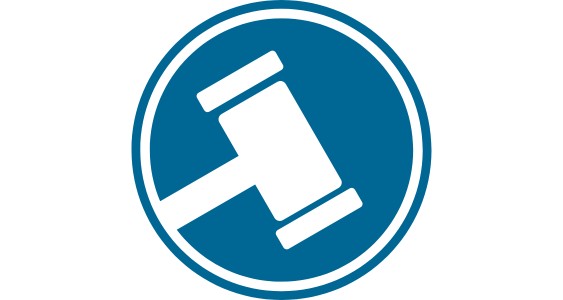Throughout history, the United States has faced significant environmental disasters that have had profound impacts on both ecosystems and human health.
These catastrophic events acted as wake-up calls, compelling the government to acknowledge the pressing necessity for legislation and regulations safeguarding the environment.
Simultaneously, they spurred society at large to recognize the urgent need for robust measures ensuring environmental protection and preservation.
This article delves into some of the pivotal environmental disasters that shaped the landscape of US environmental laws.
Camp Lejeune Water Contamination (1953-1987): Advocating for Veterans
Camp Lejeune, a US Marine Corps base in North Carolina, became synonymous with one of the most notorious environmental contamination incidents in American history. During the period from the 1950s to the 1980s, the drinking water supply at the base became contaminated with a range of toxic substances. These included volatile organic compounds such as trichloroethylene (TCE) and perchloroethylene (PCE), alongside benzene and vinyl chloride.
These contaminants seeped into the drinking water wells, exposing thousands of military personnel, their families, and civilian employees to serious health risks.

The Camp Lejeune water contamination tragedy had devastating consequences, resulting in a significant upsurge in various health complications, notably elevated rates of cancers.
In 2014, the Agency for Toxic Substances and Disease Registry (ASTDR) conducted a comprehensive study that unveiled concerning health statistics. The study specifically highlighted the elevated health risks encountered by Marines and Navy personnel stationed at Camp Lejeune from 1975 to 1985.
The study revealed heightened risks among Camp Lejeune-exposed individuals, including a 35% higher chance of kidney cancer and a 42% elevated risk of liver cancer. Additionally, it outlined a 47% increased risk for Hodgkin’s lymphoma and a 68% elevated risk for multiple myeloma in this population.
These findings underscored the severity of the health consequences resulting from the toxic exposure experienced by individuals at the base during that period.
Legal Response
The United States responded to the critical situation by passing the Honoring America’s Veterans and Caring for Camp Lejeune Families Act of 2012. This legislation aimed to address the healthcare needs of those affected by the Camp Lejeune water contamination.
The Act also established provisions for easier access to VA healthcare benefits for individuals who developed specified illnesses linked to toxic exposure.
In a further move, the Camp Lejeune Justice Act of 2022, was signed into law by President Biden in August 2022. This legislation aims to offer deserved justice to veterans exposed to toxic chemicals at Camp Lejeune, as noted by TorHoerman Law. It offers financial compensation for medical care and disability benefits to those affected by the Camp Lejeune Water Contamination.
Individuals who spent 30 days or more at Camp Lejeune between 1953 and 1987 might qualify to file a claim. Seeking legal advice from the best lawyers for the Camp Lejeune lawsuit is recommended for guidance in this process.
Santa Barbara Oil Spill (1969): Catalyst for Environmental Awareness
In 1969, a massive oil spill near Santa Barbara, California, discharged over 3 million gallons of crude oil into the Pacific Ocean.
The catastrophe originated from a blow-out on Union Oil’s “Platform A” in the Dos Cuadras Offshore Oil Field, about 6 miles from the shoreline.
Within ten days, an estimated 80,000 to 100,000 barrels of oil spilled, polluting the coastline from Goleta to Ventura. The spill also impacted the northern shores of the four Channel Islands.

According to Forbes, the disaster had a profound impact on the local marine ecosystem, resulting in the deaths of around 3,500 sea birds. Additionally, dolphins, elephant seals, and sea lions were among the marine animals affected by the spill.
The catastrophic event served as a turning point, triggering widespread public outrage and fueling the inception of the modern environmental movement. The public, horrified by the damage to marine life and coastal habitats, rallied in mass protests, demanding stricter environmental protection measures.
Legal Response
The Santa Barbara oil spill was instrumental in shaping the enactment of the National Environmental Policy Act (NEPA) on January 1, 1970.
The law, signed by President Richard Nixon, set federal environmental policy and enabled mandatory environmental assessments for federally funded projects.
It urged Nixon and Congress to tackle the worsening environmental harm caused by human activities, encompassing air, water, and land pollution in the US.
Love Canal Disaster (1978): Birth of Superfund Legislation
The Love Canal area, once an abandoned canal, served as a dumping site for around 22,000 tons of chemical waste. This waste included substances like polychlorinated biphenyls (PCBs), dioxin, and pesticides generated by Hooker Chemicals and Plastics Corporation in the 1940s and ’50s.
Over time, the site was filled and handed over by the company to Niagara Falls for urban development, and permitting housing construction. However, in 1978, state officials detected toxic chemical leaks from underground into the basements of local homes.

Further investigations revealed residents had an unusually high rate of chromosomal damage, likely due to prolonged exposure to hazardous chemical waste.
Additionally, a 1979 study conducted by the Center for Health, Environment & Justice uncovered a staggering 300% surge in miscarriages. Moreover, during the period from 1974 to 1978, 56% of children born in the Love Canal area were reported to have birth defects.
As a result, much of Love Canal was evacuated, and the state of New York purchased the abandoned land. The canal was sealed and enclosed, with surrounding buildings demolished.
Legal Response
Congress passed the Comprehensive Environmental Response, Compensation, and Liability Act (CERCLA) on December 11, 1980. This legislation was a direct response to the issues encountered by Love Canal residents and various hazardous waste sites across the country.
This legislation, often referred to as the federal Superfund law, aims to remediate sites contaminated by hazardous substances through investigation and cleanup processes.
In conclusion, environmental disasters have been pivotal in shaping US environmental laws, pushing policymakers to prioritize environmental protection and public health. These events serve as sobering reminders of the consequences of neglecting environmental stewardship.
While legislation has made significant strides, ongoing challenges like climate change necessitate continuous improvement in environmental regulations to safeguard the planet for future generations.










